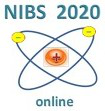Speaker
Description
The multi-cusp negative ion source with a unique end-plug, so-called Eclair ion source, has been designed for high power negative ion sources required in fusion devices such as ITER and JT-60SA. This Eclair ion source shows one of the ideal magnetic field configurations designed by the detailed fast electron analysis to achieve both uniform negative ion production and reduction of a co-extracted electron in large negative ion source with over 1m long.
The non-uniformity of negative ions was widely observed in the large negative ion sources in the world. This is a critical issue in the long pulse beam acceleration because this causes excess grid heat loads. In this study, the magnetic field configurations were examined by referring the semi-cylindrical ion source with 1.2 m long and 0.6 m in diameter used for JT-60SA (500 keV, 22 A deuterium negative ion beams for 100 s in the requirement). In order to produce uniform plasma as a seed of negative ions and reduce the co-extracted electrons in the whole extraction area, fast electrons should be not only well confined but also distributed throughout the driver region. Originally, a tent-shaped filter field was designed and demonstrated to make the uniform distribution of negative ions and electrons instead of the conventional plasma grid current filter (PG filter). The previous study utilizing the tent-shaped filter system showed that the uniform and intense negative ions in 80 % of the longitudinal extraction region. However, co-extracted electrons detected at the EXG (extraction grid) was two times larger than the case of the PG filter, which is not acceptable for the long pulse operation. In this study, the fast electron trajectory is analyzed to understand a route cause of the large electron current and produce uniform negative ions.
The fast electrons emitted from cathode filaments were moving in the longitudinal direction due to the grad-B drift of the filter field but were leaking around the corners of the ion source. It was expected that the electron leak at the corner was occurred by the weak magnetic field there because the magnets are arranged with the 90 degrees of the angle at the corners, and the magnetic field becomes weaker. Although additional magnets were mounted at the corners to suppress the electron leak and enhance the magnetic field, the numbers of leaked electrons to PG were increased contrary to our expectations. This result indicated that the electron leak was influenced by a discontinuous magnetic field at the corner region. Firstly, the proper magnet positions were examined to make smooth and continuous magnetic field respect to the tent-shaped filter configuration. Finally, hemisphere end-plug and magnet locations were designed to circulate the fast electrons efficiently at the corner region. The electron leak to the PG was completely suppressed with the Eclair shaped source chamber and continuous magnet arrangement. The plasma uniformity with the Eclair shaped ion source can be estimated by the experimental results based upon the fast electron trajectories as 21% and 20% improvements in the lateral and longitudinal directions, respectively.
As a result, the new magnetic field geometry with the Eclair type may contribute to the improvement of the negative beam uniformity and the reduction of co-extracted electrons by comparing with conventional PG and tent-shaped filters.

